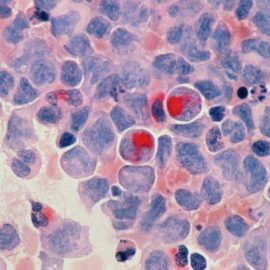

This article is an excerpt from the Shortform book guide to "I Contain Multitudes" by Ed Yong. Shortform has the world's best summaries and analyses of books you should be reading.
Like this article? Sign up for a free trial here.
What are some common myths about probiotics? Do probiotics really work?
Science journalist Ed Yong explains how humans are interdependent with microbes in his debut book I Contain Multitudes. In explaining the importance of microbes, he also debunks four common myths about probiotics and argues that food companies have over-sold their benefits.
Read on to discover four myths about probiotics, according to the examples in Yong’s book.
Debunking Myths About Probiotics
In his book about the powerful health benefits of microbes, I Contain Multitudes, Ed Yong argues that food companies over-sell the benefits of probiotics. He argues that they make wide-ranging and vague claims about probiotics, including improving bowel regularity, improving digestion, boosting immunity, treating digestive disorders, and more. While Yong says probiotics can be allies to your health, he aims to debunk myths about probiotics and their health benefits, like the commercially sold Lactobacillus (present mostly in capsules and yogurt products). In this article, we’ll discuss Yong’s argument for why popular probiotics on the market are largely ineffective by explaining how he debunks some common myths about probiotics.
(Shortform note: Michael Pollan’s In Defense of Food notes that most healthy and nutritious foods, like vegetables and other unprocessed foods, don’t have to advertise their health benefits because it’s common sense. When trying to navigate what foods are good for you, Pollan recommends a simple rule of thumb: sticking with foods that don’t have a health label.)
In his book, Yong debunks four myths about probiotics, explaining that the evidence for food companies’ claims is lacking when it comes to probiotics’ health benefits:
1. The first myth about probiotics has to do with how the studies on their effectiveness were conducted—many of the studies were done in a laboratory setting and on animals, so it’s unclear whether the results are applicable to humans. (Shortform note: To Yong’s point, a study reviewing the last several years of promising research on Lactobacillus included only one study on humans and 25 studies using mice. However, it’s common for researchers to focus on animal models first, so they can easily manipulate variables like genetics. Future research may be able to focus more on clinical trials for humans.)
2. To add to his first point, Yong also states that studies that involved humans were likely skewed because of their small sample size and the fact that the subjects were volunteers. (Shortform note: Yong doesn’t explain how the factor of volunteer subjects may have skewed the results, but we can infer that volunteers for a probiotic study may be biased toward perceiving benefits from the probiotics).
3. The number of microbes in a probiotic capsule or yogurt serving is negligible compared to the rest of the microbes in our gut. In other words, it’s a myth that probiotics have much of a positive impact on gut health, according to Yong, since it’s like a drop in a bucket and therefore won’t make much of a difference. (Shortform note: The problem of quantity may be more relevant for yogurt, as opposed to capsules. Probiotics are usually quantified in terms of colony-forming units (CFUs), and a single serving of yogurt contains an average of 6 billion CFUs while probiotic supplement capsules contain anywhere from 1-50 billion CFUs.)
4. Yong also points out that it’s a myth that commercial probiotics, such as Lactobacillus, occur naturally in the human gut. He describes studies showing that Lactobacillus fails to colonize the human gut or change the microbiome even after the subjects ate twice-daily servings of probiotic yogurt for seven weeks. (Shortform note: Although Lactobacillus doesn’t colonize the gut, studies suggest that some species can still help alleviate symptoms of lactose intolerance when people eat yogurt products.)
(Shortform note: In addition to probiotic capsules and yogurt, fermented foods like kimchi, kombucha, and kefir are other sources of probiotics that are growing in popularity. In The Art of Fermentation, Sandor Katz explains some of the benefits of eating fermented foods, as well as their historical significance in different regions. He writes that fermenting foods pre-digests nutrients into more accessible forms, increases the vitamin B content of some foods, and detoxifies compounds like pesticide residues on food.)
Yong explains that the EU has even banned the use of the word “probiotic” on food products due to the lack of evidence for its claimed health benefits. However, Yong lists a few specific circumstances when Lactobacillus does have a significant medical effect: shortening infectious diarrhea, reducing the risk of diarrhea from antibiotics, and treating a gastrointestinal disease in infants called necrotizing enterocolitis.
(Shortform note: Despite the EU ban on using the term “probiotic,” several European countries continue to use the term for dietary supplements. France classifies probiotics as a type of food product (containing live cultures of microbes) rather than a health benefit. Other countries have developed their own set of standards for specific strains and required quantities of microbes in probiotic dietary supplements.)

———End of Preview———
Like what you just read? Read the rest of the world's best book summary and analysis of Ed Yong's "I Contain Multitudes" at Shortform.
Here's what you'll find in our full I Contain Multitudes summary:
- A deep dive into the mysterious and fascinating world of microbes
- How commercial probiotics have oversold health benefits
- How modern sanitation practices are harming us






